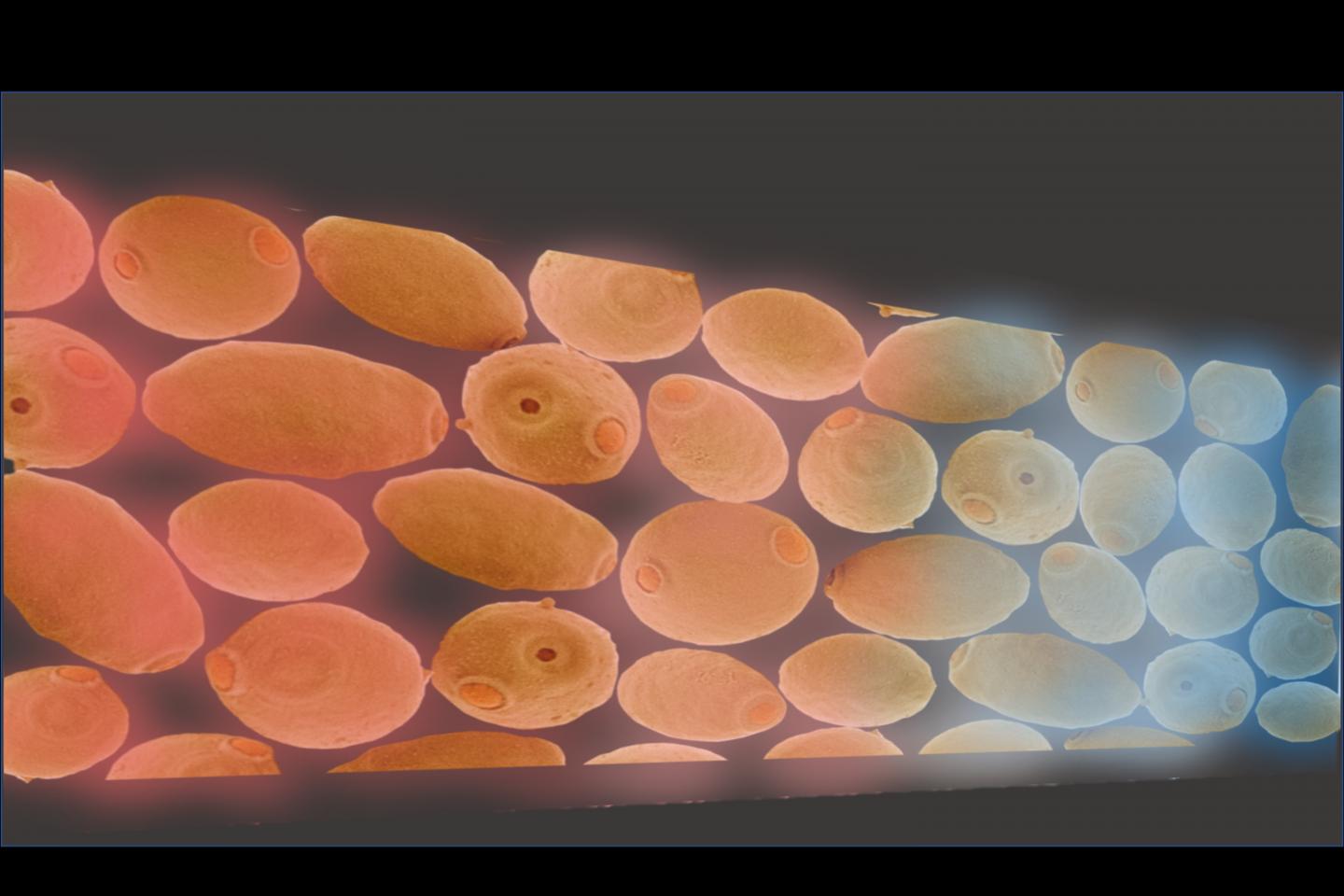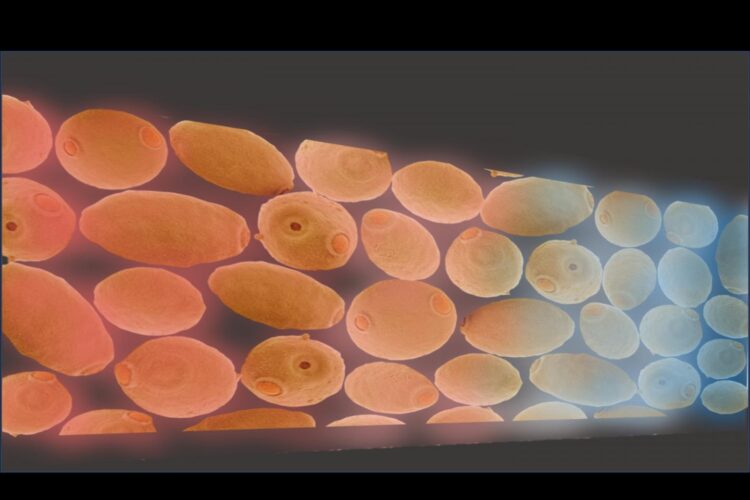
Credit: University of Gothenburg
Knowledge on how cells communicate is an important key to understanding many biological systems and diseases. A research team led by researchers at the University of Gothenburg has now used a unique combination of methods to map the mechanism behind cellular communication. Their findings can potentially improve understanding of the underlying mechanism behind type 2 diabetes.
We know that human communication is important, but communication between the cells in our bodies is just as vital. The processes where cells synchronize and coordinate their behaviour is required for an organism to function and for human organs to be able to perform their functions.
“How do cells go from monologues to dialogues? How do cells transit from acting as individuals to acting as a community? We need to better understand this complex and difficult-to-study behaviour,” says Caroline Beck Adiels, senior lecturer at the Department of Physics at the University of Gothenburg.
Have found the mechanism behind cellular communication
She is responsible for the study now published in the scientific journal PNAS, in which the researchers established a method for studying cellular communication. In the study, they successfully mapped the mechanism behind cellular communication in the metabolic process, using small culture chambers that allow the control of the environment around the cells.
The researchers chose to study yeast cells, since they are similar to human cells, and their focus is on glycolytic oscillations – a series of chemical reactions during metabolism where the concentration of substances can pulse or oscillate. The study showed how cells that initially oscillated independent of each other shifted to being more synchronized, creating partially synchronized populations of cells.
“One of the unique things with this study is that we have been able to study individual cells instead of simply entire cell populations. This has allowed us to really be able to see how the cells transition from their individual behaviour to coordinating with their neighbours. We have been able to map their behaviour both temporally and spatially, that is to say, when something occurs and in which cell,” says Beck Adiels.
Opens up opportunities for understanding type 2 diabetes
According to Beck Adiels, this knowledge can be applied in many other biological systems and more complex cells where coordinated cell behaviour plays an important role. This type of behaviour is also found in cells such as heart muscle cells and in pancreatic cells, which can be an important piece of the puzzle in diabetes research.
“The study can contribute to understanding how pancreatic cells are regulated and how they secrete insulin, which can help us understand the underlying mechanism behind type 2 diabetes. Eventually, this could contribute to developing new medicines for treating the disease.”
The study is a collaboration between eight researchers at Swedish and international universities, and Caroline Beck Adiels emphasizes that this interdisciplinary collaboration has been fundamental in studying the complex behaviour of cells from multiple perspectives.
“I am very proud of this work, which had not been possible to complete if we had not collaborated across disciplines,” she says.
###
Text: Ulrika Ernström
The study’s title: Intercellular communication induces glycolytic synchronization waves between individually oscillating cells
Digital publication: https:/
Scientific journal: PNAS, Proceedings of the National Academy of Sciences of the United States of America
Co-authors: Martin Mojica-Benavides, David D. van Niekerk, Mite Mijalkov, Jacky L. Snoep, Bernhard Mehlig, Giovanni Volpe, Mattias Goksör and Caroline B. Adiels
Facts about the research and methodology
- The researchers mapped the mechanism behind cellular communication in the metabolic process. Yeast cells were chosen since they have many similarities to human cells and can be used as a model organism.
- By using small culture chambers (a microfluidic device), yeast cells can be studied under the microscope while controlling the environment around them. The chamber can be designed so the cells are in a single layer, allowing them to be studied individually.
- Thanks to one of the substances in the metabolic chain being autofluorescent, i.e., it emits a weak glow when the cell is illuminated at a specific wavelength, the researchers can see how the cells communicate and synchronize.
- The experimental results have been verified with a detailed mathematical model of the glycolytic reactions, which has been applied to each individual cell. Software has also been developed from the ground up to study the brain’s various connections. This was used to confirm both experimental and theoretical data, but it also provides the researchers a tool to stage several situations of complex cellular communication.
Media Contact
Caroline Beck Adiels
[email protected]
Original Source
https:/





